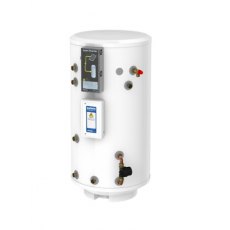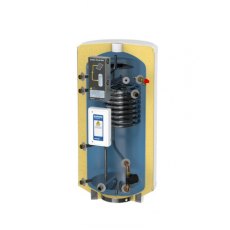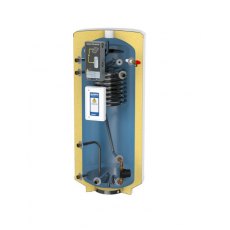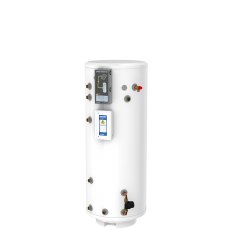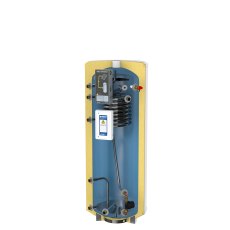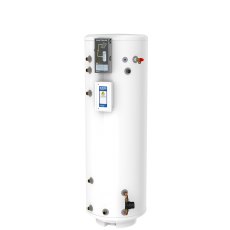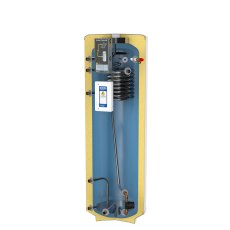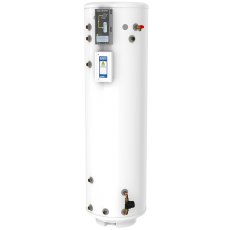Introducing the Tribune MXi Hot Water Cylinders with Mixergy PV Diverter

The next generation of hot water solutions is here! The Tribune MXi cylinder range, integrated with the innovative Mixergy Smart technology, is engineered to deliver outstanding performance, efficiency, and convenience. Whether you're a homeowner in search of dependable hot water or a professional seeking top-tier solutions for your clients, this guide will walk you through the key features and benefits of this state-of-the-art technology.
What is the Tribune MXi Cylinder Range?
The Tribune Mxi Represents a high-performance hot water cylinder crafted to cater to the demands of households. Its durable construction and advanced design ensure a consistent supply of hot water tailored to your usage patterns. Available in a variety of capacities, the MXi range is ideal for both small and large households, making it a versatile option for any setting.
(£3,566.62 inc VAT)
(£3,621.88 inc VAT)
(£3,691.48 inc VAT)
(£3,769.32 inc VAT)
(£3,886.54 inc VAT)
(£3,954.92 inc VAT)
Key Features of the Tribune MXi Cylinder
- PV Enabled (Solar Energy)
- Heat what you need and not wasted water
- Smart Tariff Ready
- Machine Learning
- Smart Controls with intelligent sensors
- Heat Pump Ready
- 25 year Guarantee
Benefits
Homeowners
- Lower heating bills
- Access to cheaper tariffs
- Improved levels of control and monitoring of your usage
- Maximum benefit from PV
- Higher EPC
- Higher property value
Tenants
- Lower heating bills
- Access to cheaper tariffs
- Improved level of control monitoring
Landlords
- Higher EPC
- Higher property value
- Reduced pressure on rents
- Monitoring of portfolio of cylinders
- Control of individual cylinders
- Contribute to reducing fuel poverty
- Maximum benefit from PV
- Lowers heating bills
- Access to cheaper Tariffs
Installers & Contractors
- Higher turnover as installations are more substantial
- Peace of mind, in the knowledge that Kingspan provide technical support and excellent product reliability with on-site aftercare from Kingspan engineers.
- Simplified procurement, with heating kits available.
How the Tribune Mxi Cylinder works
Using technology where you can selectively heat what you need rather than the whole tank. A sensor within the tank, ensures you will know how much hot water is available, allowing you to maximise your gains from your solar PV panels so you can benefit from fast availability of hot water and save money and energy.
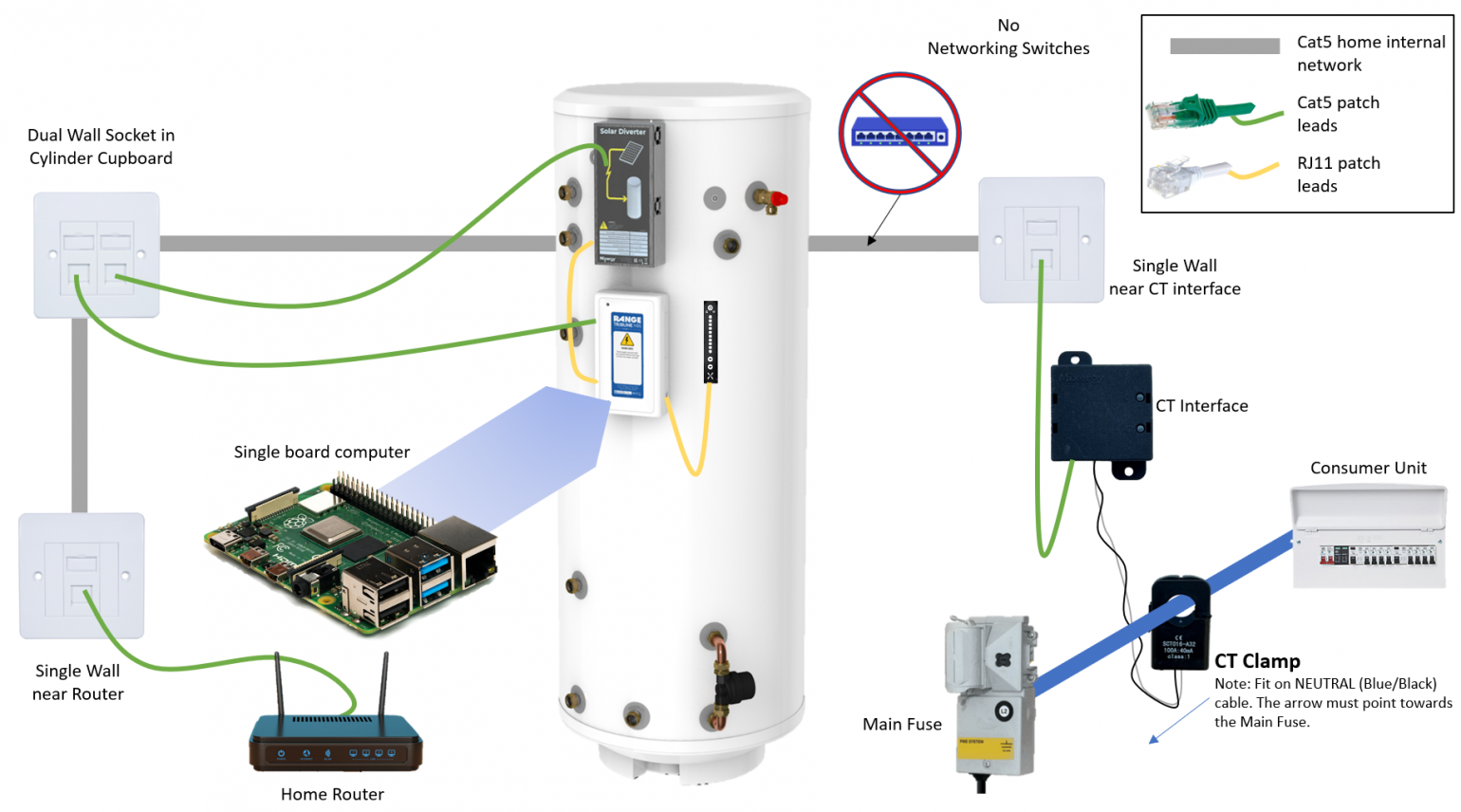
MXi Energy Perfomance
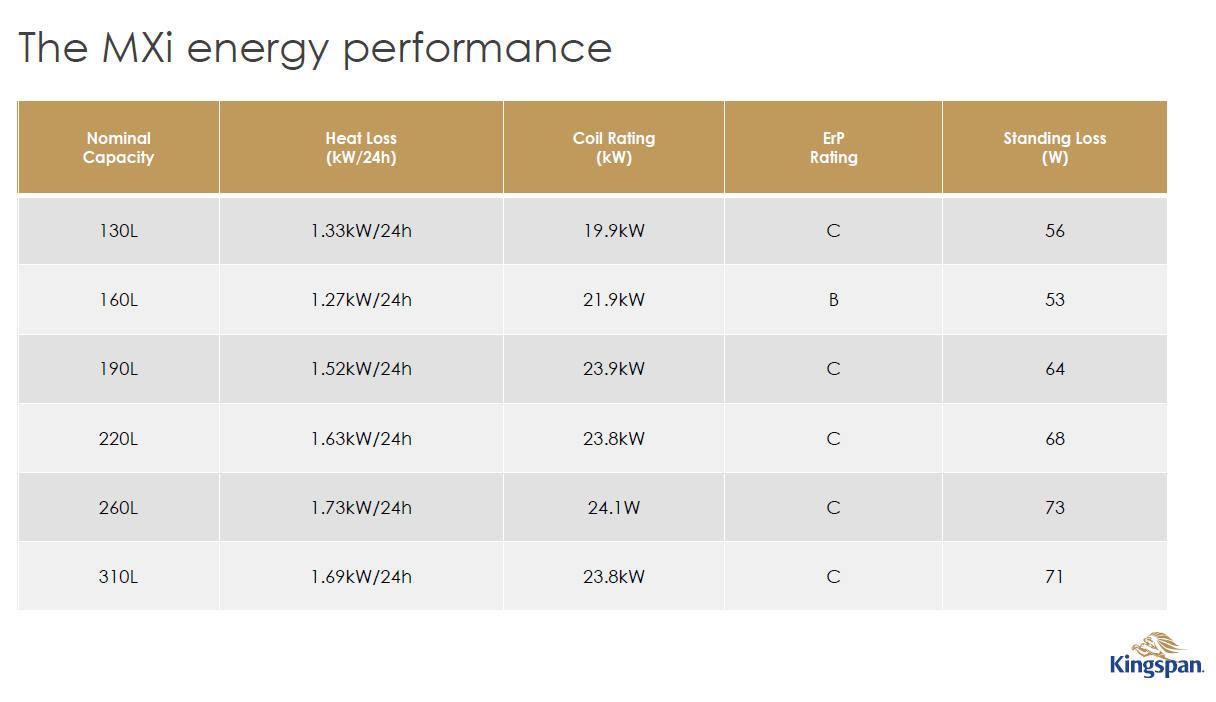
Read More From Fuel Tank Shop
.png)
Backup Power Storage Solutions

Pay on your own terms with Mondu
Frequently Asked Questions
Hot Water Cylinders
General
How do I know if my heating system is a vented or unvented system?
The main differences between a vented and an unvented system is the way the water supply works. With vented or “open” systems, the water supply comes from a cold water tank in the loft. This then uses gravity to carry the water via a “vent pipe” to the hot water cylinder. The cylinder can be copper or stainless steel, and usually lives in an airing cupboard. Because heated water expands, there needs to be somewhere for the expanded hot water to go. In the case of vented systems, the excess water will push back up the vent pipe and back into the tank in the loft.
With unvented systems, the water supply comes directly from the mains water. In the case of unvented systems, when the heated water expands, the expanded water goes into either a separate external expansion vessel (usually installed above the hot water cylinder), or the hot water cylinder itself has an internal expansion vessel. You’ll hear this referred to as a “bubble top” cylinder. As with vented cylinders, the cylinder can be copper or stainless steel, and usually lives in an airing cupboard.
What hot water cylinder do I need for my heating source?
When the only option for the property is to heat the cylinder electrically through an immersion heater, you need to select a “direct” cylinder. When you have a conventional boiler as a heat source, you need to select an “indirect” cylinder. When the property has rentable heat sources available, you need to select either a “solar indirect” or “heat pump” cylinder. Solar indirect cylinders feature two heat exchanger coils, one for connecting to the solar heat source and the other for connecting to a conventional boiler for when insufficient solar energy is available.
When dealing with any unregulated heat source or there are multiple heat sources available, a “thermal store” will usually provide the best solution.
What size hot water cylinder do I need?
For those not familiar with hot water storage, it is important to remember it is usually held at about 60°C, but is intended to be mixed with cold water down to a usable temperature. A bath using 100 litres of hot water at 40°C actually only equates to 60 litres at 60°C. A shower can use 18 litres of hot water per minute at 40°C, which is only 11 litres at 60°C.
The following average consumption levels of hot water (40°C) per person per day can be used as a guide:
- Low consumption = 20–30 litres
- Average consumption = 30–50 litres
- High consumption = 50–70 litres
What if I can’t fit a standard hot water cylinder in my airing cupboard?
With a smaller footprint to height ratio, slimline cylinders can often allow you to get through those narrow loft hatches or fit the cylinder in a tight airing cupboard. However, you will be compromising on the cylinders’ energy efficiency slightly, as tall cylinders such as these lose more heat than shorter fatter cylinders.
Another space-saving solution, a horizontal cylinder allows you to maintain cylinder capacity in situations where height restrictions apply. However, you should be aware horizontal cylinders are marginally less energy efficient with slightly higher heat loss.
How Does a Hot Water Cylinder work?
Most hot water cylinders are heated by an external heat source such as a gas boiler or heat pump. The hot water is heated by the heat source and then travels through a copper coil in the hot water tank. The heat is then transferred from the from the external heat source to the water inside the hot water tank which is then connected to a tap or shower outlet.
How long does a hot water tank usually last?
As hot water tanks are typically sealed, it’s often hard to tell how long a tank will last. So, the best way to estimate its life expectancy is to determine its age. Depending on the quality of the tank and how well it has been maintained, hot water cylinders can last anywhere up to around twelve years.
When the time does come to replace your hot water tank, Fuel Tank Shop have a wide range of tanks for you to choose from. Make sure that you choose a tank that will fit and, if your space is limited, our range of slimline hot water cylinders are usually taller and slimmer than standard hot water tanks. Although they tend to lose more heat than shorter fatter cylinders, they can often allow you to get through those narrow loft hatches or fit the hot water tank in a tight airing cupboard.
What are the different types of hot water cylinders?
Unvented hot water cylinders
These hot water cylinders are connected directly to the mains water supply, so you won’t need a cold-water storage tank. They can be installed almost anywhere in your home as they fed by pressure, rather than relying on gravity.
Vented hot water cylinders
Vented hot water cylinders are not connected to the mains water supply. Instead, they get their water supply from a cold-water tank to which they are connected.
Direct hot water cylinders
Designed with immersion heaters within the cylinder itself, direct hot water cylinders heat the water directly. Lookout for models that use multiple heaters to keep the water hot.
Indirect hot water cylinders
Indirect hot water cylinders require an external source of heat, like a boiler. They are sometimes fitted with an immersion heater as a backup heater or for boost functions.
If you need any help or advice on what type of hot water cylinder is right for your property, get in touch with our friendly team today.
What is the most efficient hot water tank?
If your hot water cylinder is nearing the end of its life and you’re thinking of replacing it, you’ll be pleased to know that, thanks to government regulations, you now have better choices and options that require water heaters to be more energy efficient.
And it’s not just the efficiency of the hot water tank you should consider; how much water you consume also plays a part and will impact your bills. Here are a few ways to lower your heating costs:
- Use less hot water
- Don't let hot water cool down before you have used it
- Heat your hot water to a lower temperature
What are the signs of a hot water tank going bad?
Your hot water tank won’t last forever. Even the best hot water tanks that have been regularly serviced will only last around eight to twelve years. If your hot water tank is getting on, it’s a good idea to be aware of the signs that it’s starting to fail. You’ll want to replace your hot water tank before it fails if you don’t want to be without hot water! Here are a few signs that it’s time to replace yours.
It's old
If your hot water tank is over ten years old, it might not necessarily be failing but it does mean you’ll soon need a new one. Over time sediment builds up in the tank making it increasingly hard to heat the water.
It’s leaking
Leaks could just be the result of a loose seal or a valve that needs replacing, or it could be that your tank has cracked or corroded.
Your water is cloudy
Cloudy or rusty water could point to a problem with your hot water tank. Sediment may have built up in the tank or there may be rust in the tank or pipes.
Not enough hot water
Over time sediment builds up in the tank. This sediment means more energy is needed to heat the water in the tank. If your tank is no longer producing enough hot water your hot water tank could need replacing.
It’s noisy
If too much sediment has built up in the tank, it will need to work extra hard to heat the water. This can cause popping and rumbling sounds.
How do I choose a hot water cylinder?
There are lots of hot water cylinders available in a range of different styles and sizes. What hot water cylinder you should choose will depend on several factors. These include the type of boiler you have and how much hot water you’ll need. Larger households will obviously need larger cylinders. You’ll want to allow approximately 50 litre capacity per person, although you should consider personal habits. Someone who likes to have a lot of baths may use more hot water than someone who takes regular quick showers.
Choose between vented and unvented hot water cylinders. Unvented hot water tanks connect directly to the mains water supply, so you won’t need separate cold-water storage tank. They are fed by pressure, rather than gravity, so can be installed almost anywhere in the home. Vented hot water cylinders are connected to a separate cold-water tank, not the mains water supply.
What Is A Tundish?
A tundish is a device placed close to the pressure release valve that allows people to see if water has escaped the system due to excessive water pressure.
More InformationIs a hot water cylinder better than a boiler?
The choice between which is better, a hot water cylinder or a boiler, will depend on your specific needs and circumstances. You’ll want to consider the size of your household, the demand for hot water, the space that you have available, and your personal preferences.
Hot water cylinders provide a dedicated reservoir of hot water that is available for various domestic needs such as showers and baths. They can work with different heating sources, including boilers, solar panels, or electric immersion heaters, offering flexibility in choosing the most energy-efficient and cost-effective method for you. Hot water cylinders are often a preferred choice for larger households with a higher demand for hot water, and allow you to combine multiple heat sources for increased energy efficiency.
Boilers are typically more space-efficient, making them a practical choice if you have limited space. They heat water on-demand, which can be more energy-efficient if you have a well-insulated home with an efficient heating system, as it avoids heat loss in a storage tank. Boilers are generally easier to maintain and require less maintenance compared to hot water cylinders.
Both systems have their advantages, and the ‘better’ option will depend on your specific requirements. Our friendly team is on hand to help you make an informed decision – just get in touch today.
Do hot water cylinders use a lot of electricity?
The size of your hot water cylinder, the insulation quality, your usage habits, and the heating method will all have an impact on its energy consumption. Larger cylinders require more electricity to heat a greater volume of water, which could lead to higher energy consumption, whereas smaller cylinders will use less electricity but may provide a limited supply of hot water. Well-insulated hot water cylinders retain heat more effectively, reducing the frequency of reheating – lowering electricity consumption. If you use hot water frequently, especially during peak hours, your electricity usage will be higher. To minimise electricity consumption, consider scheduling hot water use during off-peak times and use energy-efficient appliances.
Electric hot water cylinders are relatively common, but there are alternatives such as gas or solar water heaters, which can significantly reduce electricity usage. Evaluating these options may help you make a more energy-efficient choice.
With so many factors impacting the electricity usage of a hot water cylinder, it’s a good idea to carefully assess the cylinder size you choose and its insulation to help reduce electricity usage and save money on energy bills.
How much does it cost to install a new hot water cylinder?
If you’re simply replacing a hot water cylinder in an existing system and in the same location, the job will be more straightforward than a fresh new installation. However, there are a few factors that can affect the installation cost when replacing a hot water cylinder. Smaller cylinders are quicker, and therefore cheaper to replace, than larger cylinders as they take less time to drain the water out before they can be swapped out. Twin coil cylinders are more expensive to install than indirect cylinders. And direct cylinders are the quickest and cheapest to install. Replacing a vented direct cylinder with an unvented direct cylinder in the same location requires the installer to drain and isolating the old cold-water tank and add new pipework and fittings where needed.
If you are looking to replace a combi boiler with an indirect hot water cylinder, you will want to factor in extra budget for moving existing pipework, changing the flue, which could involve scaffolding for safe roof access, as well as decommissioning the old combi boiler.
The price for installing hot water cylinders also varies depending on the type of cylinder you are installing. Material prices can also fluctuate, as well as factors including the size and requirements of your home, the job, the quality of the products you use, and whereabouts in the UK you’re based. Always make sure the installer’s qualified for the job.

 Login
Login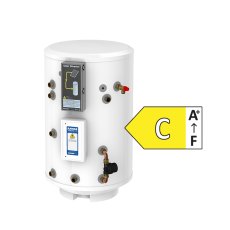
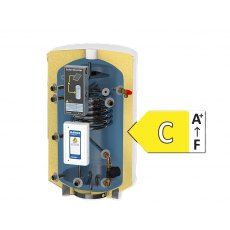
.png)
